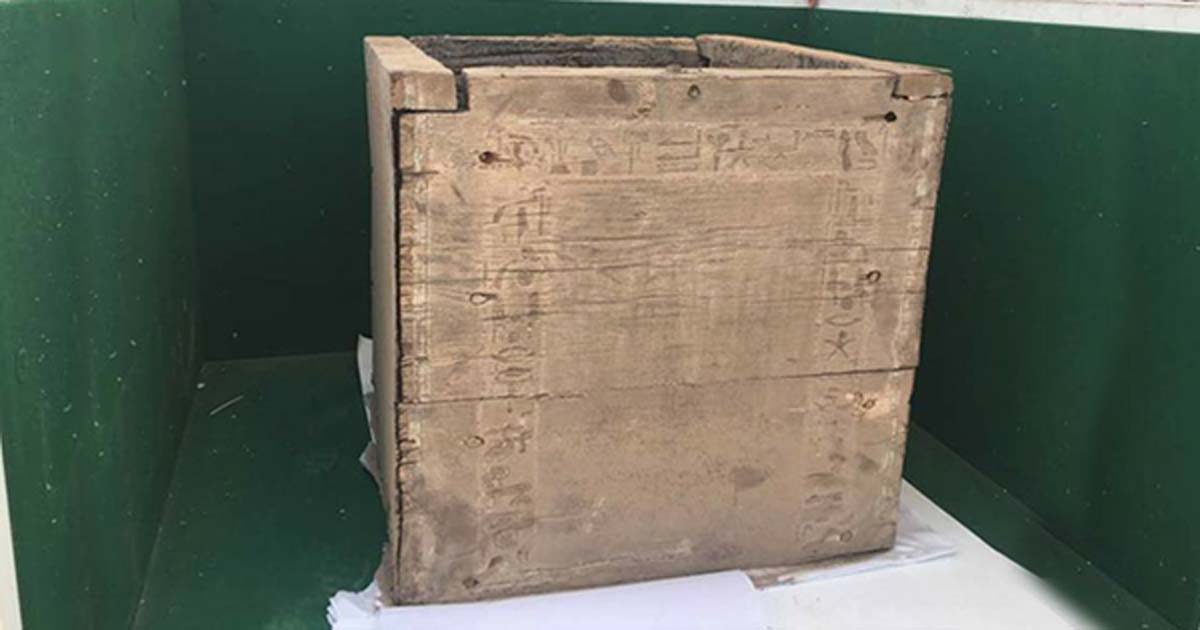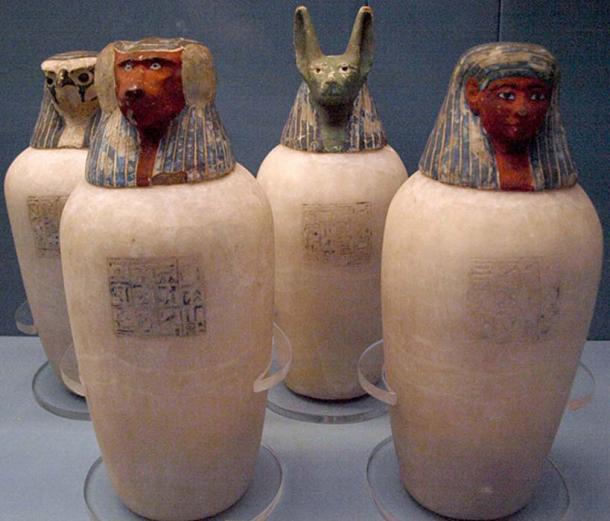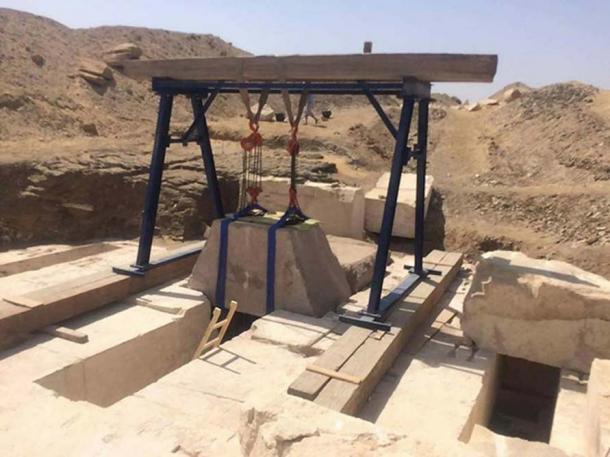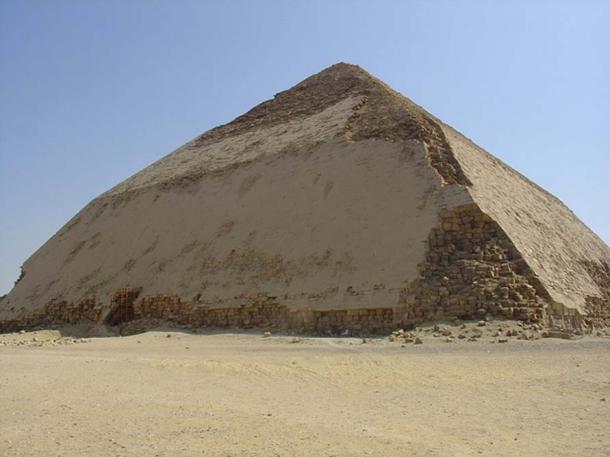Last month, in the ancient Egyptian necropolis of Dahshur, researchers discovered a pyramid. This week, inside the pyramid they found a burial chamber that is about 3,700 years old containing a wooden box on which were chiseled three lines of hieroglyphic text.
What Was In the Box?
The box would have contained canopic jars that held wrappings of the deceased person’s liver, stomach, intestines and lungs. These jars are typically used in the mummification process during the period from the Old Kingdom up until the Ptolemaic Period, the oldest examples of which are from the 11 th or 12 th dynasty and made from stone or wood. After this period, the viscera would have been preserved, wrapped and positioned with the body. From the recent announcement by the Egyptian archaeological mission who made the discovery, it is unclear whether the jars, or remnants of them, were found in the box. However, the wrapped viscera certainly were.
Canopic jars of Neskhons, wife of Pinedjem II . Made of calcite, with
painted wooden heads. Circa 990–969 BC.
Whose Tomb Is It?
Researchers think she was the daughter of the 13 th Dynasty King Emenikamaw. His pyramid is about 600 meters (1,968 feet) away from this pyramid, in which his supposed daughter was entombed.
The three lines of hieroglyphics engraved on the box (visible in the top image) are rituals to protect the deceased and also the name of its owner.
Sherif Abdel Moneim, assistant minister of antiquities, said that in the previous month, archaeologists had discovered a relief [presumably at the newly discovered pyramid] with 10 lines of hieroglyphics including the cartouche of King Emenikamaw. This has led them to conclude that the tomb, box and remains are that of the king’s daughter.
Researchers from the Egyptian Archaeological Mission also found a human-shaped sarcophagus that was in very bad condition.
Removal of the block of the burial chamber at the newly discover 13 th
Dynasty Pyramid at Dahshur.
The Pyramids of Dahshur
Dahshur, which is near Giza and about 40 kilometers (25 miles) south of Cairo has several pyramids of kings. Some of these pyramids were made of mud brick and are in bad condition.
Another of these pyramids at Dahshur, the Bent or Rhomboidal Pyramid, was built with a couple of errors. The angle of the pyramid was started at 54 degrees, which would have resulted in a huge, unstable edifice. So about halfway up the side, the architect reduced the angle to 43 degrees, giving the structure a bent shape. Another mistake is that it was built on sand and gravel—a very unstable base for such a large structure.
King Snefru’s Bent Pyramid, near King Emenikamaw’s, had a mistake
in its design: At 54 degrees the angle was too sharp, so its architect
reduced the angle to 43 degrees about halfway up.
This bent pyramid was built for King Snefru, of 2680 to 2656 BC. It was made of limestone and is 101 meters (331 feet) tall.
Snefru’s second pyramid, the Red Pyramid, was built straight up, with no steps, from top to bottom at 43 degrees. It is the first perfect pyramid of its type. He built this one because he was displeased with the Bent Pyramid. The Red Pyramid is named after the hue the rocks take on after a rain.
The huge pyramids of Giza are not far away, but they are larger, were built later and were all built at one near-perfect angle. The Great Pyramid of Giza, built by Snefru’s son Khugu, is 455 feet (138.7 meters) tall.
Source: http://www.ancient-origins.net/news-...ecently-021386
peace...








 Reply With Quote
Reply With Quote
Bookmarks